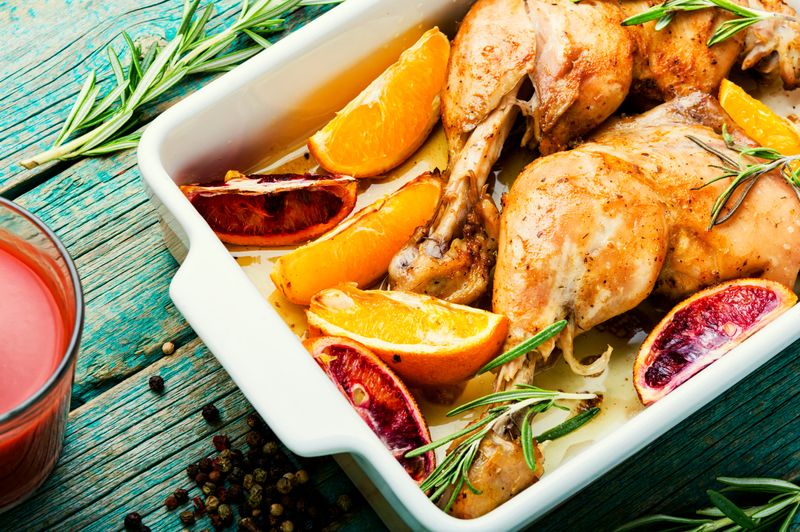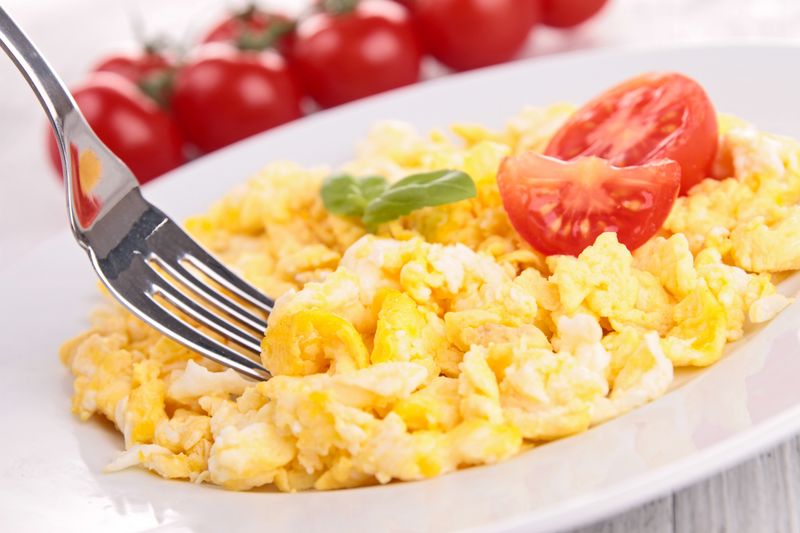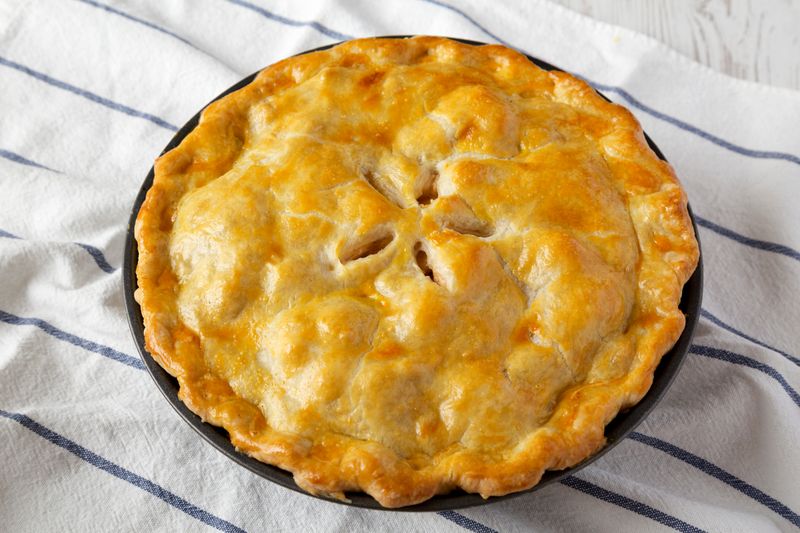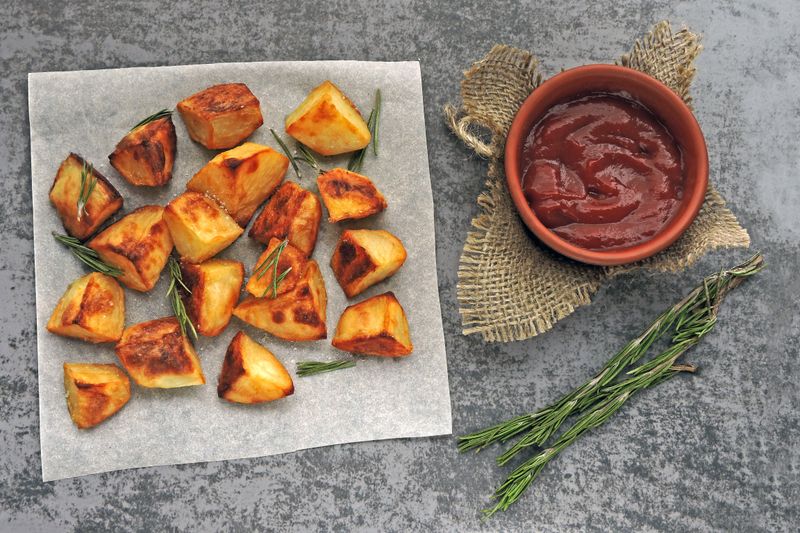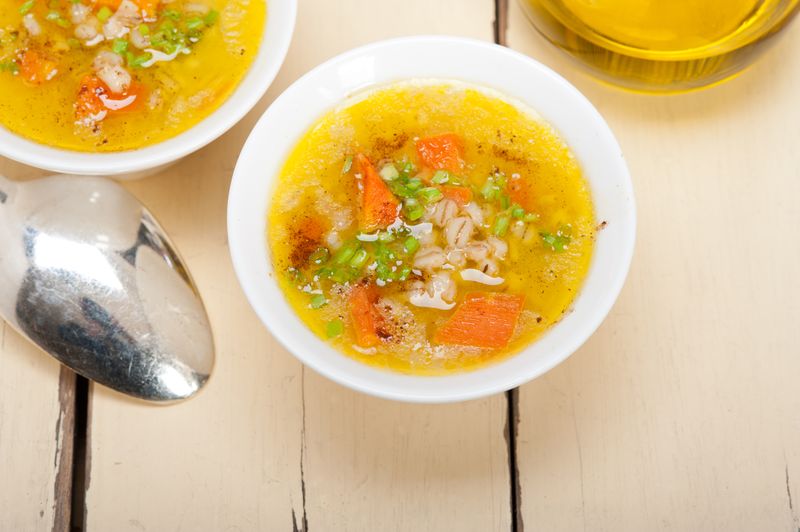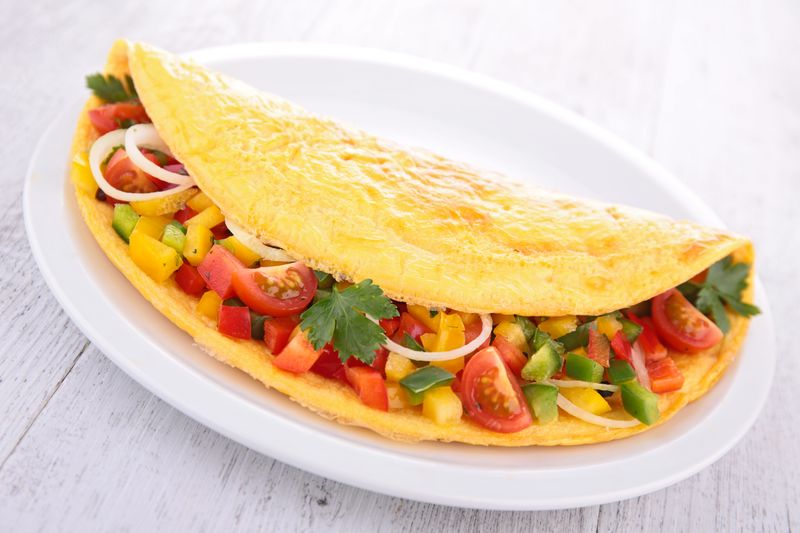Learning to cook well is like having a superpower in your kitchen. These classic recipes form the building blocks of cooking confidence and will serve you for a lifetime. Once you master these fundamental dishes, you’ll have the skills to create countless meals that will impress family and friends while saving money on takeout!
1. Perfect Roast Chicken
Golden, crispy skin outside and juicy, tender meat inside—roast chicken is culinary magic that transforms your kitchen with mouthwatering aromas. This simple yet impressive dish requires just a few ingredients: a whole chicken, butter, salt, pepper, and perhaps some herbs.
The secret lies in proper preparation: patting the chicken dry, seasoning generously inside and out, and roasting at the right temperature. Many home cooks fear undercooked poultry, but a meat thermometer removes all guesswork.
Master this dish and you’ll never fear Sunday dinner again. Plus, leftover roast chicken becomes the foundation for countless meals throughout the week—from sandwiches to soups.
2. Fluffy Scrambled Eggs
Breakfast champions know that truly great scrambled eggs require technique, not fancy ingredients. Forget rubbery, dry eggs—proper scrambling creates soft, creamy curds that melt in your mouth.
The key? Low, slow heat and constant movement. Whisk eggs thoroughly before they hit the pan, add a splash of milk or cream for richness, and use a silicone spatula to gently fold them as they cook. Remove from heat just before they look done, as residual heat continues cooking them.
This five-minute skill transforms ordinary mornings into something special. Once mastered, you can customize with herbs, cheese, or vegetables for endless breakfast variations.
3. Classic Beef Stew
Nothing says comfort like a pot of beef stew simmering on the stove. This one-pot wonder transforms tough, inexpensive cuts of meat into tender morsels through the magic of slow cooking.
The process begins with browning cubes of beef—don’t skip this step! Those browned bits create deep flavor. Then add aromatic vegetables, broth, and perhaps a splash of wine. The patience to let it bubble gently for hours rewards you with rich, complex flavors.
Beef stew teaches crucial cooking principles: building flavors in layers, balancing tastes, and understanding how time transforms ingredients. It’s also forgiving—perfect for beginners who might need to adjust seasonings as they go.
4. Homemade Pasta Sauce
Store-bought sauces can’t compare to the bright, vibrant flavors of sauce made from scratch. This kitchen fundamental relies on quality tomatoes, garlic, olive oil, and fresh herbs—simple ingredients that create magic when combined properly.
Making your own sauce teaches you to develop flavor through caramelization, reduction, and seasoning adjustments. The difference between good and great sauce often comes down to time—allowing it to simmer until flavors meld perfectly.
Once you’ve mastered basic marinara, you’ve unlocked endless variations: add cream for rosé sauce, blend in roasted peppers, or incorporate meat for a hearty Bolognese. This versatile base becomes the foundation for countless pasta dinners.
5. Perfectly Seared Steak
A restaurant-quality steak requires understanding heat and timing rather than complicated techniques. The sizzle of beef hitting a screaming hot pan creates that coveted brown crust while keeping the inside juicy and tender.
Success starts before cooking: bringing the steak to room temperature, patting it completely dry, and seasoning generously with salt and pepper. Then comes the crucial part—resisting the urge to flip or move the steak until a proper crust forms.
Mastering steak teaches heat management and develops your instincts for doneness. The reward is impressive meals for special occasions without the steakhouse price tag.
6. Flaky Pie Crust
The foundation of countless desserts, a good pie crust combines just flour, fat, salt, and water—yet mastering it marks the difference between amateur and accomplished baker. The magic happens in how these simple ingredients come together.
Cold ingredients are non-negotiable: butter must remain in solid pieces to create those coveted flaky layers. Working quickly with minimal handling prevents tough crusts. Learning to roll evenly takes practice but becomes second nature over time.
This skill opens doors to both sweet and savory creations—from apple pie to quiche. Plus, homemade crust freezes beautifully, ready for whenever inspiration strikes.
7. Crispy Roasted Potatoes
Humble potatoes transform into crispy-outside, fluffy-inside bites of heaven with proper roasting techniques. These crowd-pleasers complement almost any meal and teach fundamental cooking principles along the way.
The secret lies in parboiling before roasting—this creates the perfect texture contrast. After draining, rough up the edges by shaking the pot; these ragged bits become extra-crispy in the oven. Generous oil and high heat finish the job.
Beyond technique, roasted potatoes teach patience—rushing means soggy results. They also introduce flavor infusion as potatoes readily absorb herbs, garlic, and spices. Master this side dish, and you’ll never serve boring potatoes again.
8. Hearty Chicken Soup
Chicken soup earns its reputation as healing food through rich flavor and nourishing ingredients. Making it from scratch teaches essential kitchen skills while filling your home with comforting aromas.
Building proper broth forms the foundation—simmering chicken with aromatics until flavors meld perfectly. Skimming impurities creates clear, clean-tasting soup. The process introduces important techniques like developing flavor layers and balancing seasonings.
Beyond cooking skills, homemade soup teaches resourcefulness—using every part of the chicken and transforming scraps into something delicious. This economical meal stretches ingredients while providing multiple servings that often taste even better the next day.
9. Basic Omelet
The humble omelet showcases eggs’ versatility while teaching crucial timing and temperature control. French chefs traditionally test new cooks by asking them to prepare this seemingly simple dish—because perfect execution requires finesse.
Success begins with properly beaten eggs and a well-heated, properly sized pan. The technique involves swirling eggs while they set, creating thin layers that cook evenly. Knowing exactly when to add fillings and fold makes all the difference.
Beyond breakfast, omelets make quick dinners from refrigerator odds and ends. Master this protein-packed meal and you’ll always have a solution for “there’s nothing to eat” moments—ready in minutes with endless filling combinations.
10. Tender Meatballs
Meatballs appear in cuisines worldwide for good reason—these versatile protein packages deliver big flavor in bite-sized form. The perfect meatball strikes a delicate balance: tender and juicy, never tough or dry.
The secret lies in gentle handling and proper binding. Overmixing creates dense, rubbery results, while the right ratio of breadcrumbs and eggs ensures perfect texture. Browning before simmering in sauce develops deep flavor through caramelization.
This foundation recipe teaches portion control, flavor development, and protein cooking basics. Once mastered, customize with different meats and seasonings for Swedish, Italian, or Middle Eastern variations—proving that cooking fundamentals transcend cultural boundaries.
11. Fluffy White Rice
Perfect rice forms the foundation of countless meals across cultures, yet many home cooks struggle with this staple. The result should be fluffy individual grains—never mushy or undercooked.
Success requires understanding proper ratios and absorption methods. Rinsing removes excess starch that causes stickiness. The process teaches patience—resist the urge to peek while cooking or skip the crucial resting period.
Beyond basic technique, mastering rice builds confidence with grain cooking in general. This skill proves especially valuable given rice’s affordability and versatility. Whether as a side dish or the base for stir-fries and bowls, properly cooked rice elevates everyday meals.
12. Classic Vinaigrette
Store-bought dressings can’t match the bright, clean flavors of homemade vinaigrette. This simple emulsion requires just minutes to prepare yet transforms ordinary salads into memorable dishes.
The basic formula—one part acid to three parts oil, plus seasonings—teaches fundamental culinary chemistry. Proper emulsification creates a temporarily unified mixture from ingredients that naturally separate. This process introduces crucial kitchen skills: balancing flavors, adjusting seasoning, and understanding how ingredients interact.
Once you’ve mastered basic vinaigrette, endless variations await by switching oils, vinegars, and add-ins. This versatile mixture works beyond salads too—as a marinade for vegetables or meat, or drizzled over roasted vegetables.
13. Chocolate Chip Cookies
The iconic chocolate chip cookie teaches baking fundamentals while creating irresistible treats. These beloved cookies demonstrate how slight technique variations produce dramatically different results—chewy, crispy, or cakey.
Success depends on understanding creaming methods, proper measuring, and ingredient temperature. Creaming butter and sugar incorporates air for proper texture, while room-temperature eggs blend seamlessly. Careful flour measurement prevents tough cookies.
Beyond technique, cookies teach patience—allowing dough to rest develops deeper flavor, and proper cooling creates perfect texture. This gateway baking project builds confidence for more complex desserts while providing immediate gratification. Few kitchen achievements feel more satisfying than pulling perfect cookies from the oven.

